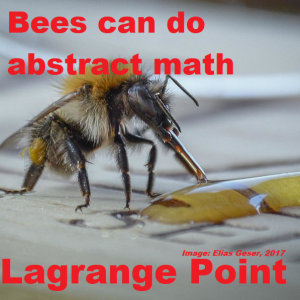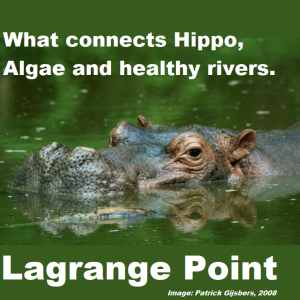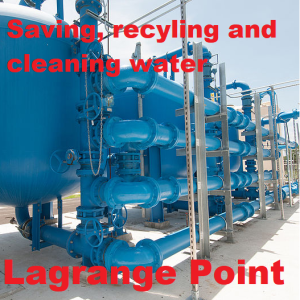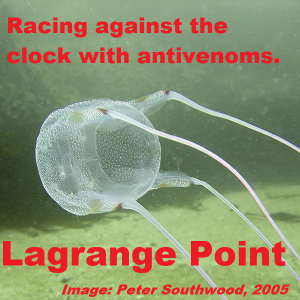Episodes

Monday May 27, 2019
Episode 328 - Mathematics and Nature, from Bees to Choruses of Frogs
Monday May 27, 2019
Monday May 27, 2019
Mathematics is not just something humans can perform. It's present across the universe and especially in nature. So can animals understand abstract mathematical concepts? Can we learn from the different complicated algorithms and mathematical models used by animals to improve the internet of things? What can social media help tell us about both human and animal tourists to nature reserves?
References:
- Scarlett R. Howard, Aurore Avarguès-Weber, Jair E. Garcia, Andrew D. Greentree, Adrian G. Dyer. Numerical cognition in honeybees enables addition and subtraction. Science Advances, 2019; 5 (2): eaav0961 DOI: 10.1126/sciadv.aav0961
- Ikkyu Aihara , Daichi Kominami , Yasuharu Hirano and Masayuki Murata. Mathematical modelling and application of frog choruses as an autonomous distributed communication system. Royal Society Open Science, 2019 DOI: 10.1098/rsos.181117
- Anna Hausmann, Tuuli Toivonen, Christoph Fink, Vuokko Heikinheimo, Henrikki Tenkanen, Stuart H.M. Butchart, Thomas M. Brooks, Enrico Di Minin. Assessing global popularity and threats to Important Bird and Biodiversity Areas using social media data. Science of The Total Environment, 2019; DOI: 10.1016/j.scitotenv.2019.05.268

Monday May 20, 2019
Episode 327 - Hippos and Algae, Lions and Porcupines, plus Narwhals.
Monday May 20, 2019
Monday May 20, 2019
What connects Hippos, Algae and keeping the rivers of Africa healthy? What causes Lions to square-off against Porcupines? What is keeping the Narwhal population healthy despite it's genetic diversity? We look at the strange interconnection between species and how small changes in one ecosystem can destabilise a whole species.
Hippos help keep the rivers and lakes of Africa healthy...through their poo.
Hippos are essential in pumping silicon from the savannah into the rivers and lakes of Africa.
Lions hunt lots of creatures, but what needs to happen for them to try attacking a Porcupine?
Porcupines vs Lion sounds like a March Mammal Madness battle, but what causes a Lion to go after such a tough prey?
The Narwhals population is rebounding but it its still at risk due to it's shallow gene pool.
Can a species survive with a shallow gene pool?
References:
- Schoelynck, J., Subalusky, A.L., Struyf, E., Dutton, C.L., Unzué-Belmonte, D., Van de Vijver, B., Post, D.M., Rosi, E.J., Meire, P., Frings, P. Hippos (Hippopotamus amphibius): The animal silicon pump. Science Advances, 2019 DOI: 10.1126/sciadv.aav0395
- Julian C. Kerbis Peterhans, Gastone G. Celesia, Thomas P. Gnoske. Lion-Porcupine Interactions in Africa, Including Impacts on Lion Predatory Behavior. Journal of East African Natural History, 2019; 108 (1): 1 DOI: 10.2982/028.108.0101
- Westbury, M.V. Narwhal genome reveals long-term low genetic diversity despite current large abundance size. iScience, 2019 DOI: 10.1016/j.isci.2019.03.023

Monday May 13, 2019
Episode 326 - Capturing, reusing, recycling and cleaning water.
Monday May 13, 2019
Monday May 13, 2019
Water is essential for life, but we need to take care of the complete water cycle. Treating waste water can help remove harmful pollutants from cosmetics and medication. Industrial processes and landfill can also make super salty water, that we need to clean before releasing. Without good water management then we can end up without water in times of drought, and in times of flood more water than we can handle. This week we find out about ways to better manage the most precious of resources, water.
References:
- Qian Yang, Bridget R Scanlon. How much water can be captured from flood flows to store in depleted aquifers for mitigating floods and droughts? A case study from Texas, US. Environmental Research Letters, 2019; 14 (5): 054011 DOI: 10.1088/1748-9326/ab148e
- Rui Zhao, Tingting Ma, Shuying Li, Yuyang Tian, Guangshan Zhu. Porous Aromatic Framework Modified Electrospun Fiber Membrane as a Highly Efficient and Reusable Adsorbent for Pharmaceuticals and Personal Care Products Removal. ACS Applied Materials & Interfaces, 2019; 11 (18): 16662 DOI: 10.1021/acsami.9b04326
- Chanhee Boo, Robert K. Winton, Kelly M. Conway, Ngai Yin Yip. Membrane-less and Non-evaporative Desalination of Hypersaline Brines by Temperature Swing Solvent Extraction. Environmental Science & Technology Letters, 2019; DOI: 10.1021/acs.estlett.9b00182

Monday May 06, 2019
Episode 325 - Racing against time, from Box Jellyfish to Alzheimers
Monday May 06, 2019
Monday May 06, 2019
Medicine is often a race against time, to diagnose, to develop and to treat. This week we're looking at new research which speeds up the detection of Alzheimers in patients and provides a chance to test out potential treatments. We also find out how University of Sydney researchers may help deliver a quick antivenom to those stung by the deadly box jellyfish. Plus ways to turn leftover bits of junk in blood plasma, into useful diagnosis tools that may help save time and lives in treatment without wasting more time on tests.
References:
- Man-Tat Lau, John Manion, Jamie B. Littleboy, Lisa Oyston, Thang M. Khuong, Qiao-Ping Wang, David T. Nguyen, Daniel Hesselson, Jamie E. Seymour, G. Gregory Neely. Molecular dissection of box jellyfish venom cytotoxicity highlights an effective venom antidote. Nature Communications, 2019; 10 (1) DOI: 10.1038/s41467-019-09681-1
- Maria D Giraldez, Ryan M Spengler, Alton Etheridge, Annika J Goicochea, Missy Tuck, Sung Won Choi, David J Galas, Muneesh Tewari. Phospho-RNA-seq: a modified small RNA-seq method that reveals circulating mRNA and lncRNA fragments as potential biomarkers in human plasma. EMBO Journal, 2019 DOI: 10.15252/embj.2019101695
- Andreas Nabers, Henning Hafermann, Jens Wiltfang, Klaus Gerwert. Aβ and tau structure-based biomarkers for a blood- and CSF-based two-step recruitment strategy to identify patients with dementia due to Alzheimer's disease. Alzheimer's & Dementia: Diagnosis, Assessment & Disease Monitoring, 2019; 11: 257 DOI: 10.1016/j.dadm.2019.01.008
Medicine is often a race against time, to diagnose, to develop and to treat. This week it's stories of scientists and doctors racing against the clock.
New research which speeds up the detection of Alzheimer's in patients and provides a chance to test out potential treatments.
We find out how University of Sydney researchers may help deliver a quick antivenom to those stung by the deadly box jellyfish.
Plus ways to turn leftover bits of junk in blood plasma, into useful diagnosis tools that may help save time and lives in treatment without wasting more time on tests.
There are whole bundles of random RNA fragments in blood plasma, but these can be used to help diagnose specific issues.
The box jellyfish is just one of the many things in Australia that is trying to kill you, but now it's slightly less deadly thanks to University of Sydney researchers.

